Conservation
Golden Lion Tamarin
With head twitching, alert, she begins to run along the needle-thin branch. Small, wiry hands clutch branches that fly past, and a twist in the air allows a clutch at a moth. Two hands ensnare the prey. Retiring to a nest in a hollow, golden hair peeks out into the humid forest.
Published
8 years agoon
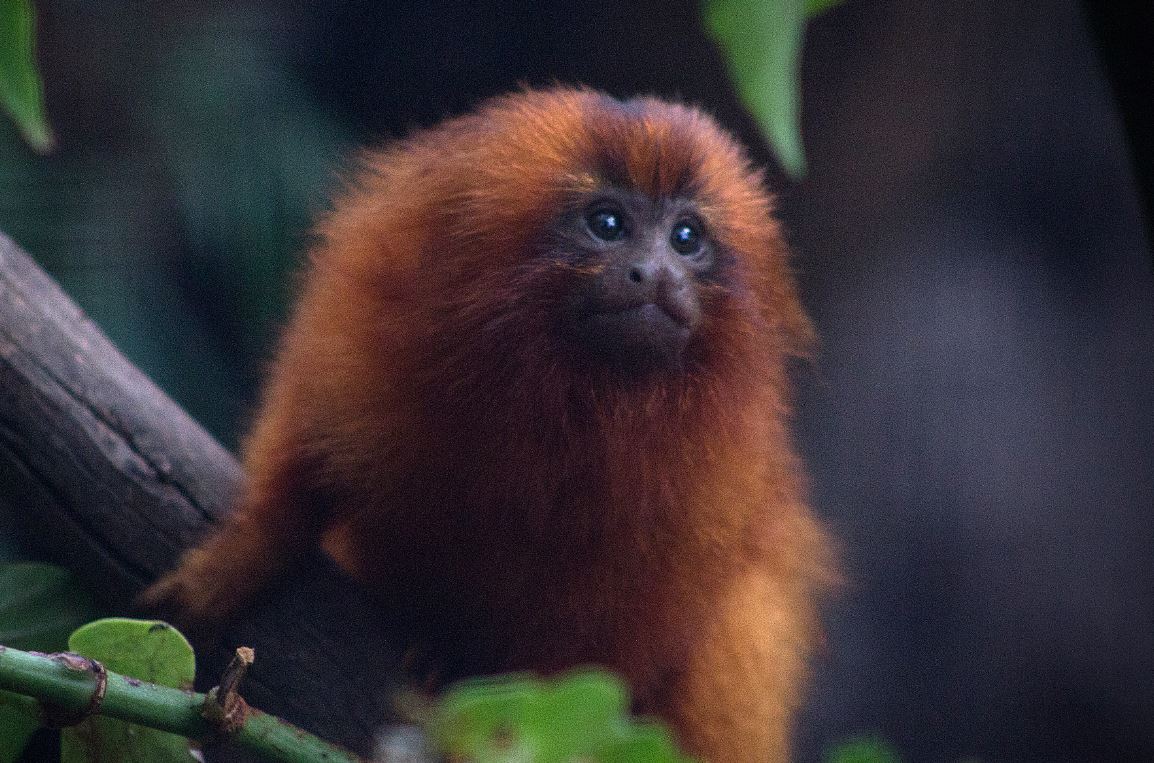
Species: Golden Lion Tamarin (Leontopithecus rosalia) | Conservation Status: Endangered | Region: Native to coastal forests in Brazil | Interview: Senior Keeper of Primates, Jodie Ellen
About Golden Lion Tamarins
With a staggering rate of decline, the golden lion tamarin (Leontopithecus rosalia) saw its population dwindle to just a few hundred in the late 1900s, before an international breeding success story spanning decades was to take dramatic effect.
Still, numbers have only climbed significantly when taken relatively: wild populations are estimated at around 1,500 individuals across four parts of Brazil, meaning the species remains listed as Endangered by the International Union for the Conservation of Nature (IUCN). This, however, is a significant improvement on its listing in 2000 of Critically Endangered, and these wild individuals are supplemented by another almost 500 captive animals in 150 zoos worldwide.
The golden lion tamarin (GLT) resides in lowland, seasonal rainforests of Brazil, with less than 5% of their original habitat remaining unspoilt. As part of the GLT Reintroduction Program, populations are spread across Poço das Antas Biological Reserve, Fazenda União Biological Reserve and some private land in other parts of south-eastern Brazil.
The Details
GLTs are famous for the bright colouring that is their namesake. This orange glow is believed to come from a mixture of carotenoids (the pigments that give colour to ripe tomatoes) in their diet, and sunlight. Whilst small, GLTs are in fact the largest of the callitrichines – a family in the Primate order that includes tamarins and marmosets – and can reach over ten inches in height. Males and females are roughly the same size, and weigh around 600 grams.
Unlike other, more restful tree-dwellers, GLTs remain active for around 12 hours every day and use different nests each night. This not only enables movement in search of food, but limits the possibility of predators tracking their scent. Days begin with feeding on fruit, and with the coming of dusk, interest moves to insects. This sits them in the dieting class of omnivorous, with an appetite ranging from fruit and eggs to small vertebrates.
One behaviour quite uncommon in the animal world, and seen in GLTs, is that of micromanipulation. Long fingers make this possible, and come in handy when searching for prey like insects that may be discoverable in crevices and under leaves. As with most primates, GLTs demonstrate high levels of intelligence, including the use of tools. Tara Stoinski and Benjamin Beck write that in eight individuals (captive, free-range), tool use was seen in 100% of the animals. This included the use of sticks and radio-collars to hunt and clean.
Golden Lion Tamarin Conservation
The plight of the golden lion tamarin is not a new thing to science or, indeed, the public. Their decline was noted decades ago, which spurred international cooperation in captive-breeding and local reintroduction programs. Adelaide Zoo is one of the groups involved in this work, and Senior Keeper of Primates, Jodie Ellen, is proud of the progress seen over the years. Whilst she primarily works with the orangutans (Pongo abelii) and siamangs (Symphalangus syndactylus), she also gets time with many other species of primates, which include Adelaide Zoo’s resident family of GLTs.
Ellen says the biggest threat to GLTs continues to be habitat loss.
“It’s estimated this species has lost between 95-98% of its natural home range and can now only be found in small pockets of rainforest in Brazil. As a general rule, habitat destruction is the biggest threat to most of these primates.”
With this in mind, captive breeding is crucial but, as with all animals in captivity, welfare will – and should – frequently come into question. To ensure ongoing improvements to the way GLTs are cared for at Adelaide Zoo, the team added an innovative segment to their enclosure: the ‘Tamarins on the Run’ tunnel system.
Speaking about enrichment for the GLTs, Ellen says, “Our award-winning aerial tunnel systems allows our golden lion tamarins to explore the treetops of some of our nearby gardens, providing a lot of mental stimulation for the group, as well as plenty of space for them to roam and exercise.
Enrichment
“The 55-metre ‘Tamarins on the Run’ tunnel system provides the tamarins with the choice of using it to travel through the vegetation between the three enclosures in the Tamarin House, passing over visitor paths, [which provides] great views of these arboreal animals,” she continued. “The tamarins can choose where and when they go, and use the tunnels to seek out sun or forage at food stations along the walkway.”
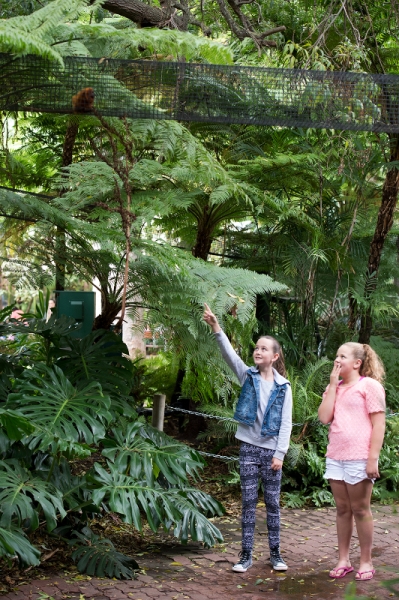
“We also provide a varied diet which we present in different ways for enrichment and to encourage natural foraging behaviours,” says Ellen.
“Some of the different enrichment foods, items and techniques used include different herbs, food hidden [in] different size boxes, different browse [trails], and changing their rooms so the entire space becomes enriching.”
With breeding in captivity being such a critical part of the keeping of GLTs, the way in which enrichment practices affect behaviour is something that comes under careful consideration. So far, Ellen assures us, developments have gone to plan.
“This group has been a very successful breeding pair so a lot of that comes down to compatibility. The tunnels have been very successful in terms of behaviour, allowing the tamarins opportunities to forage amongst the plants and sunbathe, and has increased behaviours such as them relying on vocalisations more than simply sight as they can spread out over bigger distances. We also provide enrichment in the form of different foods and the way meals are presented.”
Dieting
As with a lot of species, tamarins have a varied diet that is not consistent through the day. It can be important for zoos to attempt to replicate this dietary cycle in captivity. This factor is being met in a number of ways at Adelaide Zoo.
“The Golden Lion Tamarin has a diverse, omnivorous diet consisting of fruit, flowers, nectar, bird eggs, insects and small vertebrates,” says Ellen.
“At Adelaide Zoo, we provide something we nickname ‘primate cake’ morning and evenings, which consists of a vitamin powder containing more than 20 vitamins and minerals mixed with a fruit and vegetable juice mix. This is a nutritionally balanced and complete food source. Fruit and vegetables are supplied before midday and removed at around 2pm to 3pm to encourage them to eat more of the primate cake and to prevent pests coming that could be attracted to leftover fruit and vegetables.
“Food is mostly diced to ensure we can create enough feeding points so all eight golden lion tamarins have access to food,” she says, “but we will also spike larger pieces around. They do eat insects, both ones they catch themselves out in the tunnel, and insects provided as part of their diet and enrichment. We give them mealworms, crickets and wood roaches.”
Captive Breeding
Perhaps partly in credit to the keepers and enclosure design team, and perhaps partly because GLTs may be more suited than some species to life in captivity, Ellen says that stereotypic behaviours (repetitive and abnormal actions sometimes visible in captive animals) have not been seen in the tamarin group at Adelaide Zoo.
On top of this, getting them to breed has not been an issue, according to Ellen.
“We have not had any challenges breeding this group. The female was pregnant the first breeding season after introduction, and has reproduced regularly since then.
“We have had three pregnancies with this pair resulting in six offspring. We also believe we will be expecting another birth before the end of the year [2016]. Genetically, we are not required to breed from this pair anymore so we will be looking at halting the breeding of this group after this final birth.”
In terms of what’s next for the group at Adelaide Zoo, Ellen says a lot will be decided via recommendations from the wider program.
“We will be guided by the species breeding recommendations. [We] will not be breeding with our pair again after the current suspected pregnancy. In the future, some of Adelaide Zoo’s offspring may move to other zoos to begin new breeding programs or we may have other individual golden lion tamarins come here to pair up with one of our offspring to start a second breeding group. These decisions are made in conjunction with the species coordinator. We are not directly involved with the ‘release back to the wild’ program, but the species is managed internationally to ensure the best genetics for the captive populations which in turn does allow for the release programs to happen as needed. Adelaide Zoo is part of the international breeding program for this species and we are guided by those recommendations.”
What about telling them apart, though? Ellen promised that, whilst microchipping is done as a backup, if you “spend enough time with them, like our keepers at Adelaide Zoo, you can visually tell them apart.”
Whilst this species is still in desperate need of help, due to the continued destruction of its natural habitat, the work performed internationally to bring them back from the brink is a true testament to what can be achieved in conservation when needs must.
Golden Lion Tamarin: Photograph (c) Nicole Miller, Adelaide Zoo
Golden Lion Tamarin – Watchful: Photograph (c) Nicole Miller, Adelaide Zoo
Girls and Golden Lion Tamarin Run: Photograph (c) Adrian Mann, Adelaide Zoo
Golden Lion Tamarin – Looking Down: Photograph (c) Nicole Miller, Adelaide Zoo.References:
Stoinski, T.S. and Beck, B.B. (2001) ‘Spontaneous tool use in captive, free-ranging golden lion tamarins (Leontopithecus rosalia rosalia)’, Primates, 42(4), pp. 319–326. doi: 10.1007/bf02629623
Kierulff MCM, Raboy BE, de Oliveira PP, Miller K, Passos FC & Prado F (2002) “Behavioral ecology of lion tamarins”. In: Kleiman DG, Rylands AB, editors. Lion tamarins: biology and conservation. Washington DC: Smithsonian Inst Pr.
Pratginestós, J. (1993) Leontopithecus rosalia (Golden Lion Tamarin). Available at: http://www.iucnredlist.org/details/full/11506/0 (Accessed: 10 August 2016)
Smithsonian National Zoological Park. “Research on behavior, ecology and habitat.” Available at: http://nationalzoo.si.edu/SCBI/EndangeredSpecies/GLTProgram/InWild/Research/ (Accessed: 10 August 2016).
You may like

Blakiston’s Fish Owl

Kakapo

A vote to focus attention on Australia’s amazing animals, and their alarming decline

Mexican Grey Wolf

Penguin run undergoes UK sport commentary

Penguin run undergoes UK sport commentary

Seven Worlds, One Planet – Extended BBC Trailer

Thunberg: We will never forgive you

Bilbies Released Back into the Wild in 2018



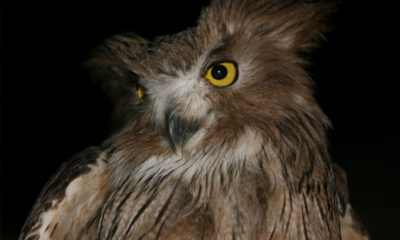
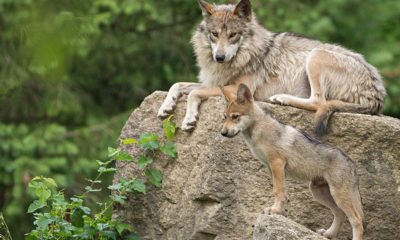


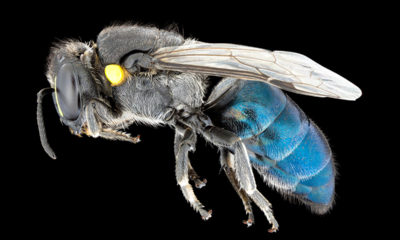

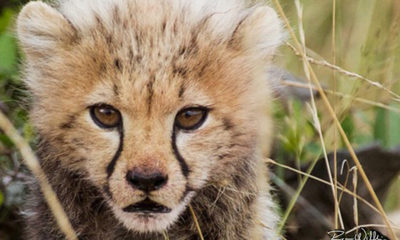



You must be logged in to post a comment Login